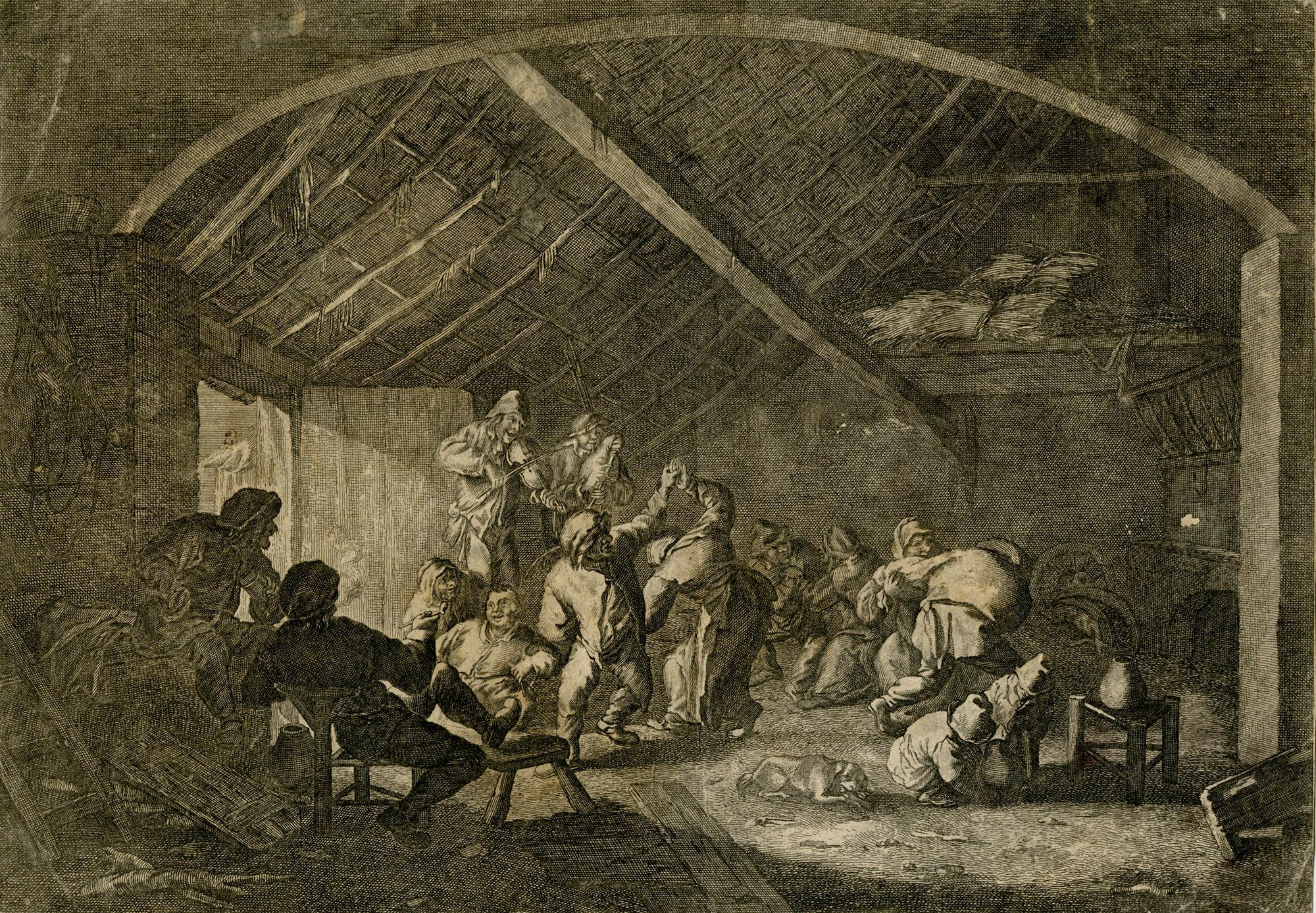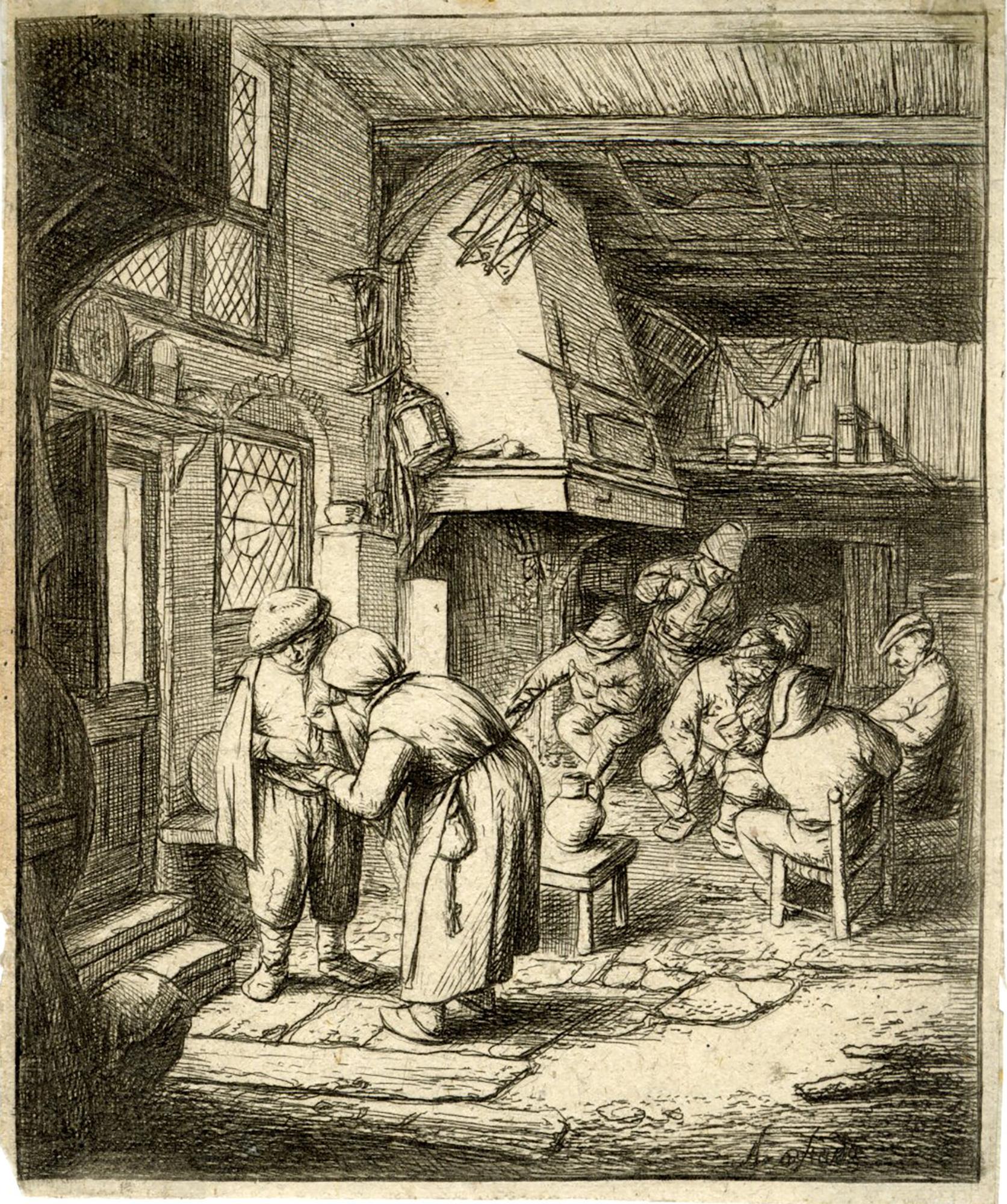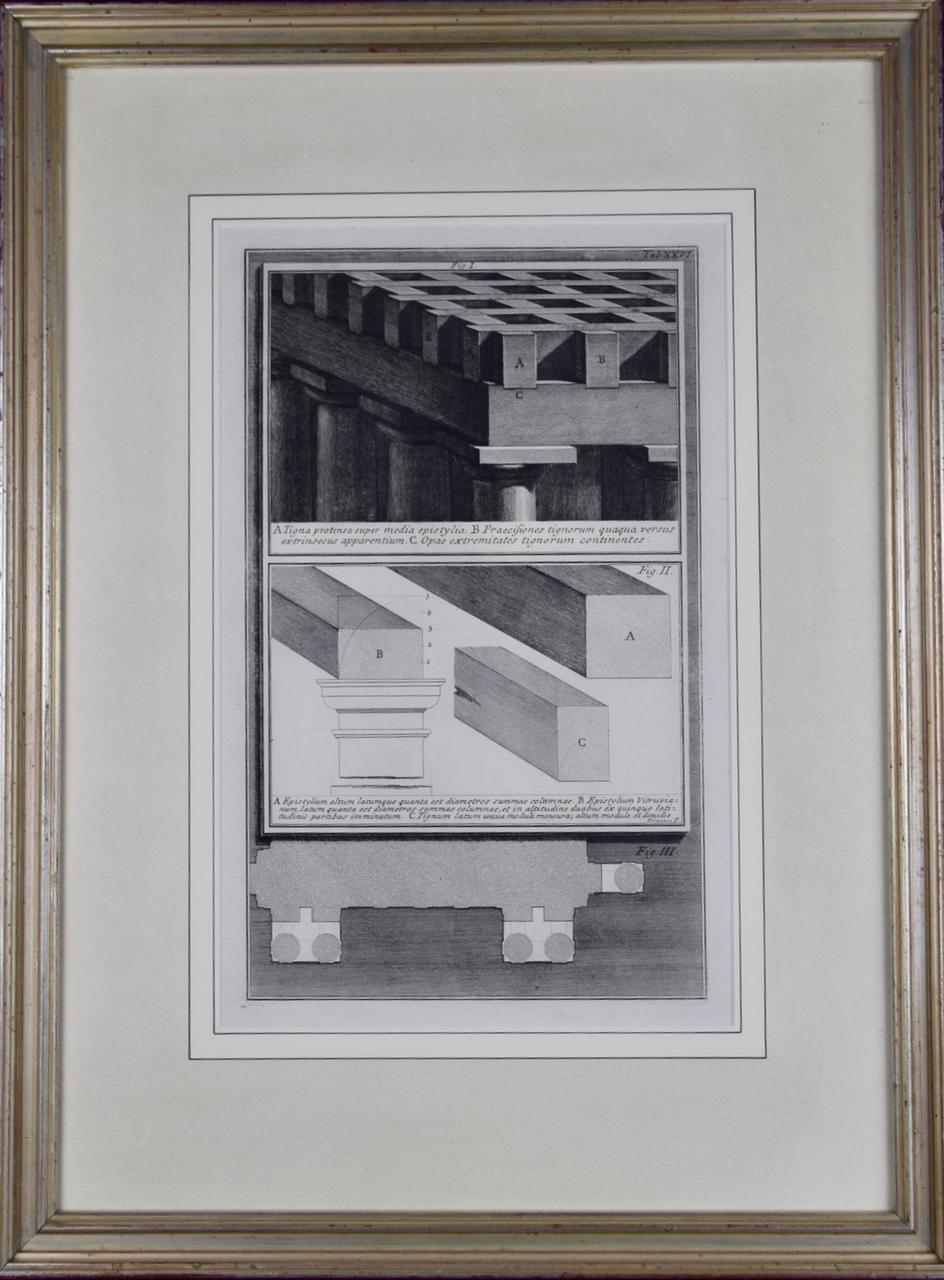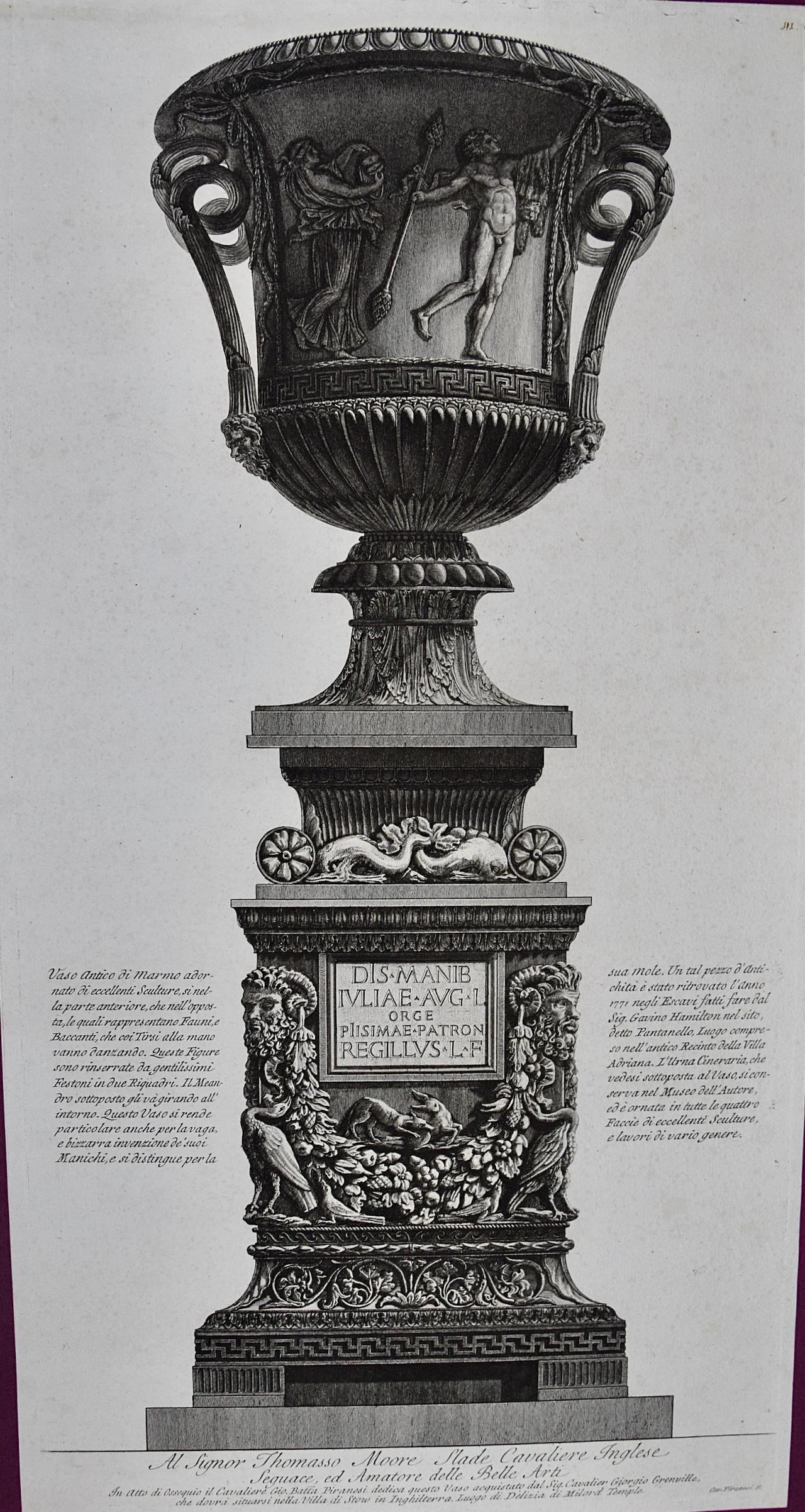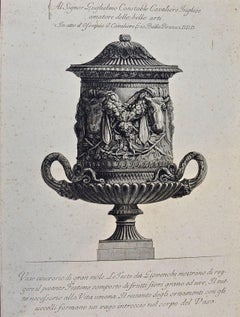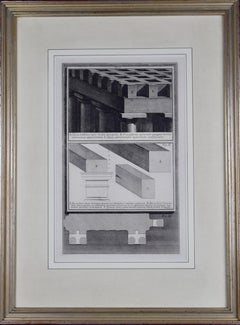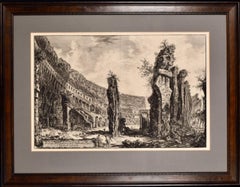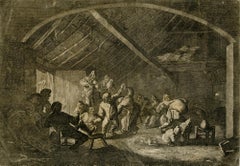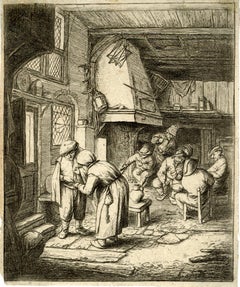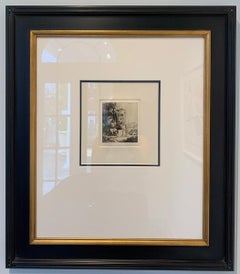Items Similar to Church of St. Costanza, Rome: An 18th Century Piranesi Architectural Etching
Want more images or videos?
Request additional images or videos from the seller
1 of 11
Giovanni Battista PiranesiChurch of St. Costanza, Rome: An 18th Century Piranesi Architectural Etching1774
1774
About the Item
This is a framed 18th century Giovanni Battista Piranesi etching entitled: "Veduta interna del Sepocro di Santa Costanza, fabbricato da Costantino Magno, ed erroneamente detto il Tempio di Bacco, inoggi Chiesa della medesima Santa" (View of the interior of the Tomb of St. Costanza, built by Constantine the Great, and erroneously called the Temple of Bacchus, now the Church of S. Costanza), which is plate 25 from Piranesi's "Vedute di Roma" (Views of Rome), part I. This Piranesi etching depicts the interior of the ancient Roman mausoleum of Santa Costanza, located in Rome, Italy. It showcases Piranesi's technical skill in capturing the intricate details of the architecture and the play of light and shadow within the space. The composition is organized around the central dome of the mausoleum, which dominates the image and creates a sense of grandeur and awe. The walls of the mausoleum are covered with intricate patterns and decorations, including frescoes and marble reliefs, which are also meticulously rendered by Piranesi. The figures in the etching, including a priest and several visitors, provide a sense of scale and perspective, further emphasizing the monumentality of the space. Piranesi was known for his fascination with the ruins of ancient Rome, and his etchings often served as a way to document and celebrate these historical treasures. "Veduta interna del Sepolcro di Santa Costanza" is a beautiful example of Piranesi's mastery of etching and his ability to capture the grandeur and beauty of ancient Roman architecture.
This 18th century Piranesi etching is presented on an antiqued silver-colored wood frame with a light tan mat and a thin black inner mat trim. The frame measures 27" high, 32" wide and 1.5" deep. There is a vertical center fold, as issued. The print is in very good condition.
Santa Costanza is a 4th-century church in Rome, Italy, on the Via Nomentana, which runs north-east out of the city. One of the finest examples of early Christian art and architecture in Rome, the stunning 4th-century mausoleum of Santa Costanza offers a vivid insight into the Eternal City’s gradual transition from pagan antiquity to Christian capital beginning in the reign of the Emperor Constantine. The vaults of the circular mausoleum are covered with beautiful 4th-century mosaics that are both religious and secular, featuring doves, peacocks and creeping vines. A prominent feature of the structure are twelve pairs of ancient granite columns recycled from an earlier Roman structure. According to the traditional view, Santa Costanza was built under Constantine I as a mausoleum for his daughter Constantina and possibly a second daughter, Helena. It is a round building with well preserved original layout and mosaics. It has been built adjacent to a horseshoe-shaped church, now in ruins, which has been identified as the initial 4th-century cemeterial basilica of Saint Agnes. Santa Costanza and the old Saint Agnes were both constructed over the earlier catacombs in which Saint Agnes is believed to be buried.
This Piranesi etching is held by many museums, including; The Metropolitan Museum of Art, The British Museum, The Rijksmuseum, The Museum of Art at Yale and The Fine Arts Museums of San Francisco.
References: Wilton-Ely 1994 158, Hind 1922 37.III, Focillon 1918 811
Giovanni Battista Piranesi (1720–1778) was born in Venice in 1720 and died in Rome in 1778. He was the son of a stone mason and was trained as an architect. After a slow start to his career, he eventually achieved great success as an architect, archaeologist, artist, designer, collector, and antiquities dealer. His mission was to glorify the architecture of ancient Rome through his etchings. He began collecting, restoring and selling ancient architectural objects in the 1760's in partnership with Thomas Jenkins and Gavin Hamilton, who had financed numerous excavations in the Pantanello area of Hadrian’s Villa at Tivoli. In 1768 Piranesi began creating etchings depicting these objects. The plates were eventually published together as a set in 1778 in "Vasi, Candelabri, Cippi, Sarcofagi, Tripodi, Lucerne ed Ornamenti Antichi". Piranesi dedicated many of the plates to patrons, colleagues, good customers and influential people. Many of the antiquities shown in Vasi were eventually sold to King Gustav III of Sweden by Piranesi's son, Francesco Piranesi, after his father’s death, and now reside in the National Museum in Stockholm.
Piranesi's etchings were highly detailed and captured the grandeur of Rome's ancient ruins and architectural marvels. He used a combination of realism and imagination to create dramatic compositions that were both accurate and awe-inspiring. His highly dramatized prints often depict imaginary interiors and frequently include figures in mysterious activities, who are dwarfed by the magnitude of their monumental surroundings.
In addition to his art, Piranesi also designed buildings and interiors in Rome, including the Church of Santa Maria del Priorato and the Villa Adriana in Tivoli. He also wrote several books on archaeology and ancient art. He was also a collector of ancient architectural objects, restoring and often selling them to European tourists. Piranesi was knighted by the Pope in 1765 and he was elected a Fellow of the Society of Antiquaries in England in 1757. Piranesi's style greatly influenced the development of neoclassical art movement of the late 18th century and early 19th centuries. His dramatic scenes inspired generations of set designers, as well as artists, architects and writers. Piranesi died on November 9, 1778, in Rome, Italy, at the age of 58. He is remembered today as one of the greatest artists and architects of the 18th century, whose work continues to inspire and fascinate people around the world. His prints have continued to increase in value to institutions and collectors.
- Creator:Giovanni Battista Piranesi (1720-1778, Italian)
- Creation Year:1774
- Dimensions:Height: 27 in (68.58 cm)Width: 32 in (81.28 cm)Depth: 1.5 in (3.81 cm)
- Medium:
- Movement & Style:
- Period:1770-1779
- Condition:
- Gallery Location:Alamo, CA
- Reference Number:Seller: # 52001stDibs: LU1173212224932
Giovanni Battista Piranesi
Piranesi was born in Venice in 1720 and died in Rome in 1778. He was the son of a stone mason and was trained as an architect. After a slow start he eventually achieved great success as an architect, archaeologist, artist, designer, collector, and antiquities dealer. His mission was to glorify the architecture of ancient Rome through his engravings and etchings. His highly dramatized prints often depict imaginary interiors and frequently include figures in mysterious activities, who are dwarfed by the magnitude of their monumental surroundings. Piranesi's style greatly influenced the neoclassical art movement of the late 18th century. His dramatic scenes inspired generations of set designers, as well as artists, architects and writers. His prints have continued to increase in value to institutions and collectors.
About the Seller
5.0
Platinum Seller
Premium sellers with a 4.7+ rating and 24-hour response times
Established in 2011
1stDibs seller since 2019
281 sales on 1stDibs
Typical response time: 2 hours
- ShippingRetrieving quote...Shipping from: Alamo, CA
- Return Policy
Authenticity Guarantee
In the unlikely event there’s an issue with an item’s authenticity, contact us within 1 year for a full refund. DetailsMoney-Back Guarantee
If your item is not as described, is damaged in transit, or does not arrive, contact us within 7 days for a full refund. Details24-Hour Cancellation
You have a 24-hour grace period in which to reconsider your purchase, with no questions asked.Vetted Professional Sellers
Our world-class sellers must adhere to strict standards for service and quality, maintaining the integrity of our listings.Price-Match Guarantee
If you find that a seller listed the same item for a lower price elsewhere, we’ll match it.Trusted Global Delivery
Our best-in-class carrier network provides specialized shipping options worldwide, including custom delivery.More From This Seller
View AllAncient Roman Marble Vase: 18th C. Piranesi Etching Vaso Cinerario di Gran Mole
By Giovanni Battista Piranesi
Located in Alamo, CA
"Vaso Cinerario di Gran Mole. Le Teste dei Giovenchi mostrano di reggere it pesante Festone composto di Frutti Fiori Grans ed use. Il tuto Necefsario all Vita Umana. Il Restante degl...
Category
1760s Old Masters Figurative Prints
Materials
Etching
18th Century Etching of Ancient Roman Architectural Objects by Giovanni Piranesi
By Giovanni Battista Piranesi
Located in Alamo, CA
A. Tigna Protensa Super Media Epistylia, B. Praecisiones Tigorum Quaqua Versus Extrinsectus Apparentium, C. Opae Extremitates Tigorum Contintes, Fig. I, plate 88 from "Vasi, Candelab...
Category
Mid-18th Century Old Masters Figurative Prints
Materials
Etching
Ancient Roman Medici Marble Vase: An 18th Century Etching by Piranesi
By Giovanni Battista Piranesi
Located in Alamo, CA
This large 18th century etching by Giovanni Battista Piranesi is entitled "Vaso antico di Marmo adornato di eccellenti Sculture si nella parte anteriere che nell' opposta, le quail r...
Category
1770s Old Masters Figurative Prints
Materials
Etching
The Roman Colosseum: A Framed 18th Century Etching of the Interior by Piranesi
By Giovanni Battista Piranesi
Located in Alamo, CA
This large framed 18th century etching by Giovanni Battista Piranesi entitled "Veduta dell'interno dell'Anfiteatro Flavio detto il Colosseo" (View of the interior of the Flavian Amph...
Category
1760s Old Masters Figurative Prints
Materials
Etching
A Framed 18th C. Piranesi Etching of an Ancient Marble Vase from Hadrian's Villa
By Giovanni Battista Piranesi
Located in Alamo, CA
This large framed 18th century etching by Giovanni Battista Piranesi is entitled "Vaso antico di Marmo adornato di eccellenti Sculture si nella parte anteriere che nell' opposta, le ...
Category
1770s Old Masters Figurative Prints
Materials
Etching
Bow Street Office: Rowlandson Hand-colored Engraving from Microcosm of London
By Thomas Rowlandson
Located in Alamo, CA
An early 19th century print entitled "Bow Street Office", an illustration (Plate 11) from "The Microcosm of London", published in London in 1808 by R. Acker...
Category
Early 1800s Other Art Style Interior Prints
Materials
Etching, Aquatint
You May Also Like
Scène de Bistrot - Unknow Artist After Adrian Van Ostade - 18th Century
Located in Roma, IT
Image dimensions: 15 x 12 cm.
Scène de bistrot is a black and white etching with burin interventions on paper realized by an anonymous artist, after the Flemish artist Adrian Van Ostade...
Category
Early 18th Century Old Masters Figurative Prints
Materials
Etching
Farmers enjoying a barn dance with a violinist and a bagpiper.
By Adriaen van Ostade
Located in Middletown, NY
Etching on cream laid paper mounted to a cream laid paper support, 9 x 12 7/8 inches (230 x 327 mm), thread margins. Three small areas of light skinning with one extremely small hole...
Category
Mid-17th Century Old Masters Interior Prints
Materials
Etching, Laid Paper
The Peasant Settling His Debt
By Adriaen van Ostade
Located in Middletown, NY
Etching on thin, cream laid paper 4 x 3 5/8 inches (100 x 90 mm), with narrow margins, trimmed inside the platemark. Adhesive residue at the top right and left corners, and archival ...
Category
17th Century Old Masters Interior Prints
Materials
Etching
'Jesus and the Woman at the Well, ' by Amand-Durand, Engraving
By Armand Durand
Located in Oklahoma City, OK
This early 19th century framed 35" x 31" engraving by artist Amand-Durand depcits an etching of 'Jesus and the Woman at the Well,' after the Dutch master, Rembrandt van Rijn. This poignant Biblical story is depicted by Arman-Durand in Rembrandt style...
Category
Early 19th Century Old Masters Figurative Prints
Materials
Engraving
$1,200 Sale Price
20% Off
La Messe (The Mass), after Caravaggio
Located in Middletown, NY
Chiaroscuro woodcut with underlying engraving on cream laid paper, printed from two blocks in brown and olive. 10 1/4 x 12 3/4 inches (260 x 321 mm) (plate), full margins with the text printing clearly below in black ink. In very good condition with scattered surface soiling and several minor flecks of light discoloration in the margins, especially in the area of the lower right corner, well outside of image area. Unobtrusive notations in pencil in the margin and on the verso. All condition issues are consistent with age. After a drawing of the same title by Polidoro da Caravaggio...
Category
Mid-18th Century Old Masters Figurative Prints
Materials
Laid Paper, Engraving, Woodcut
The Rest on the Flight into Egypt - engraving after Rembrandt - 19th Century
By Charles Amand Durand
Located in Roma, IT
The Rest on the Flight into Egypt is an engraving on ivory-colored paper realized after Rembrandt by Charles Amand Durand (1831-1905) after an etching by Rembrandt. This wonderful pi...
Category
19th Century Old Masters Figurative Prints
Materials
Engraving

